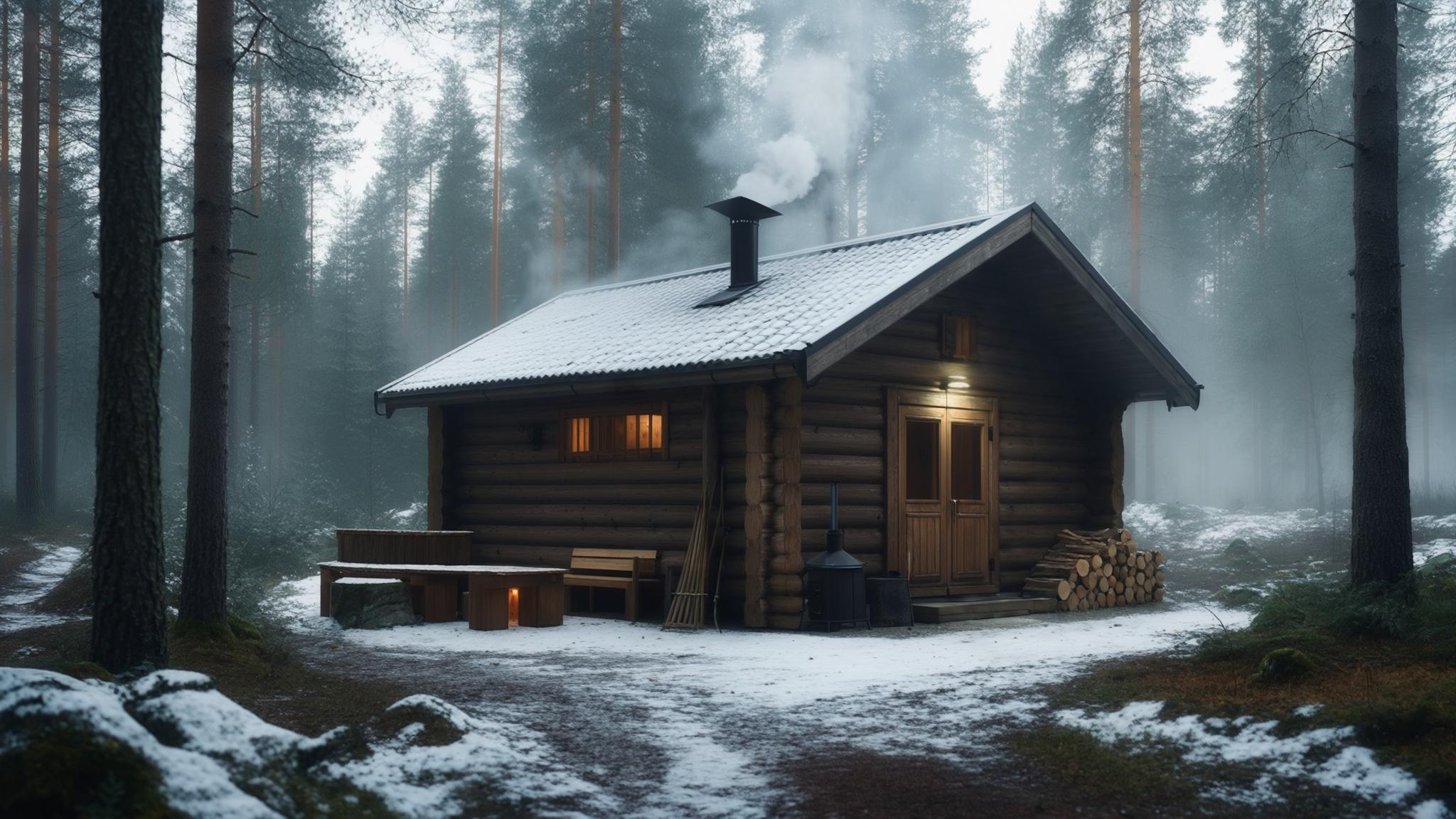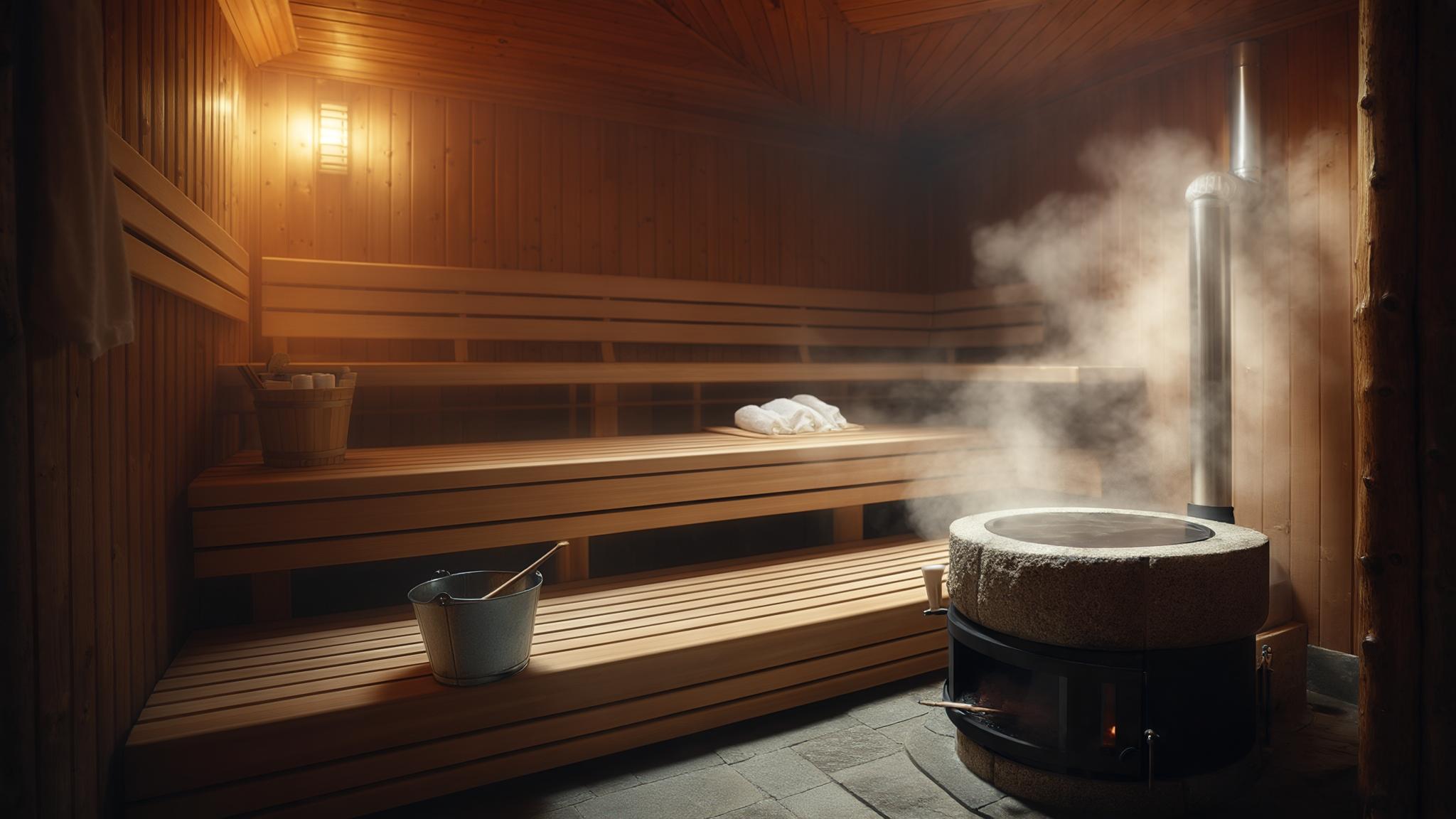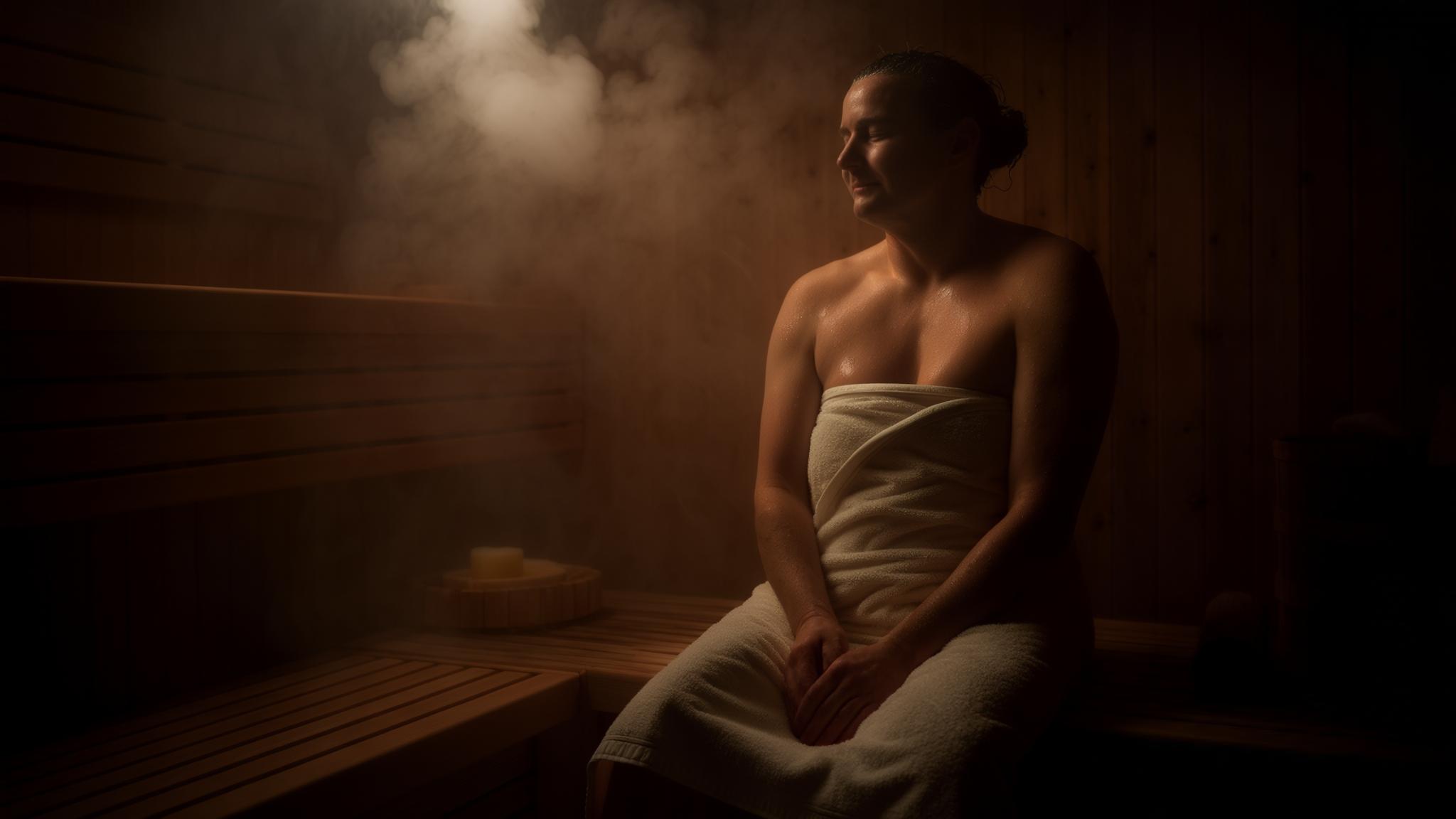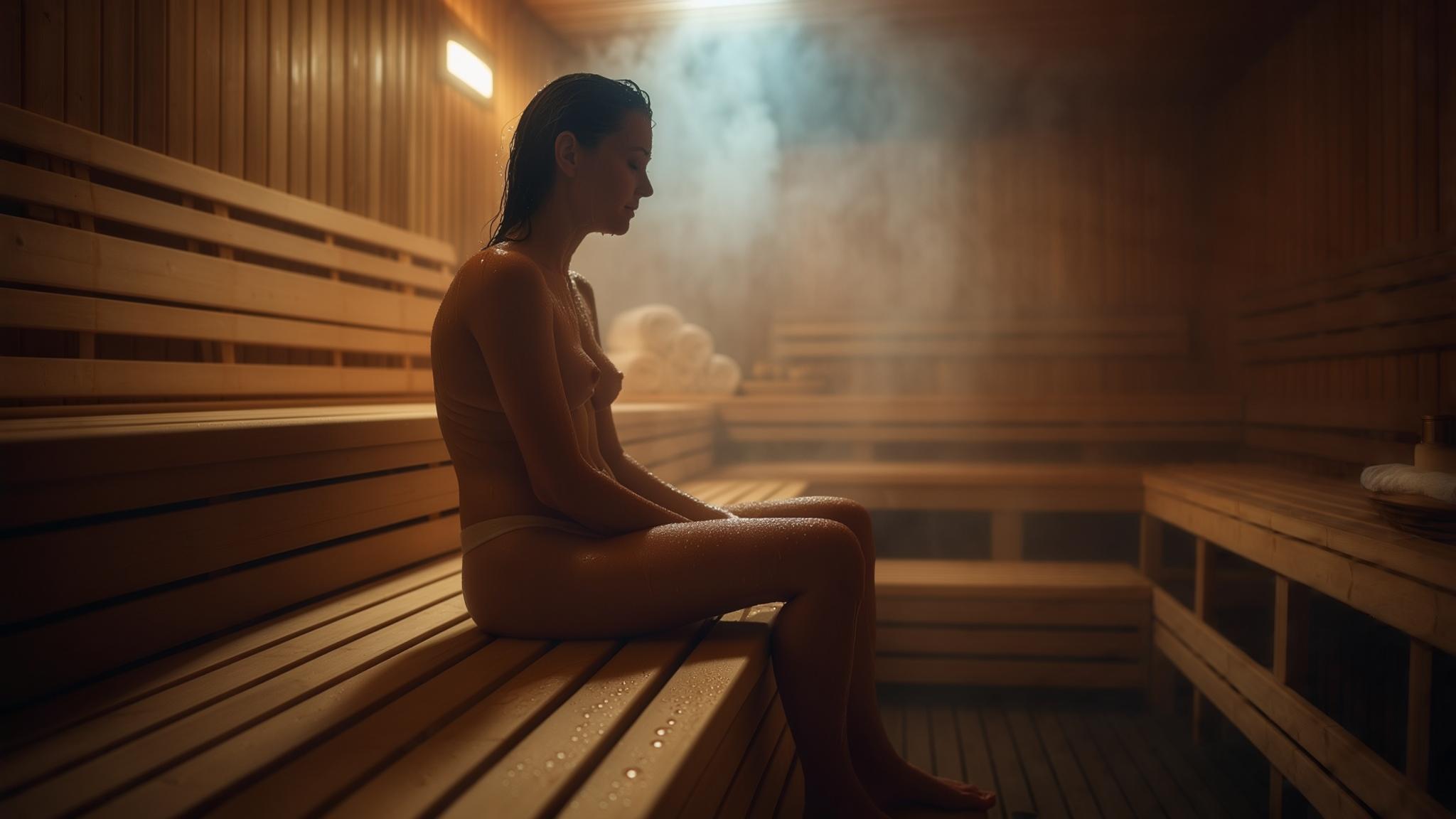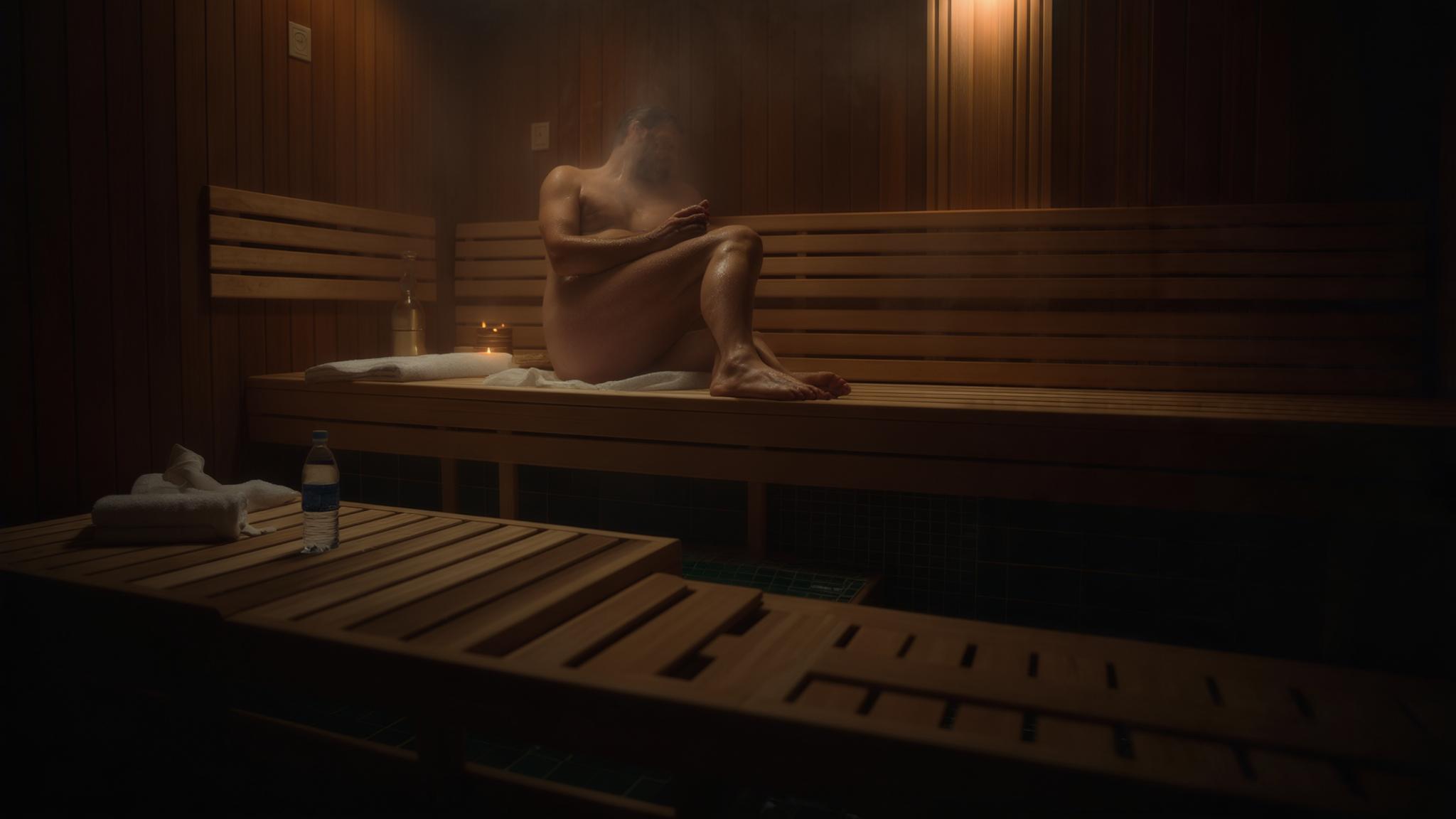Did you know that Finland has an estimated 3.3 million saunas for a population of just 5.5 million people? That’s more than one sauna for every two Finns! According to UNESCO, this incredible ratio shows just how deeply finnish sauna culture is woven into Finnish life.
I’ll never forget my first real Finnish sauna experience – I walked in thinking it’d just be a hot room, only to discover this profound cultural ritual that touches every part of Finnish identity. The moment that löyly steam hit my face, I realized I wasn’t just getting hot – I was participating in a sacred tradition that UNESCO recognized as Intangible Cultural Heritage of Humanity. It made me understand why saunas are perfect for year-round enjoyment and wellness practice.
Table of Contents
-
What Makes Finnish Sauna Culture Actually Finnish?
-
Sacred Rituals That Define the Experience (Elements 1-5)
-
Why Architecture Actually Matters (Elements 6-10)
-
The Social Magic That Happens in Saunas (Elements 11-15)
-
How Seasons Shape Sauna Life (Elements 16-20)
-
Modern Twists on Ancient Traditions (Elements 21-25)
-
How HETKI Sauna Brings Authentic Culture Home
-
Final Thoughts
TL;DR
-
Finnish sauna culture includes 25 essential elements across five areas: sacred practices, smart architecture, social customs, seasonal rhythms, and modern adaptations
-
Real Finnish saunas run at 70-100°C with specific rituals like löyly (steam creation) and vihta (birch whisk beating) that have deep spiritual meaning
-
Traditional construction uses log buildings with wood-fired stoves, tiered benches, and natural ventilation – designs perfected over centuries
-
Social aspects focus on equality, respectful quiet, family traditions, and hospitality as core values that strengthen communities
-
Seasonal practices connect with nature through winter ice swimming, summer lake cooling, and celebrations tied to natural cycles
-
Modern adaptations include urban apartment saunas, public sauna revival, wellness integration, sustainable tech, and digital features while keeping cultural authenticity
What Makes Finnish Sauna Culture Actually Finnish?
Real finnish sauna culture is about way more than just sitting in a hot room – it’s spiritual, social, and connects you to centuries of tradition. You’re entering something that Finns traditionally called the “church of nature,” and trust me, once you experience it properly, you’ll understand why.
Temperature matters more than you might think. Traditional finnish sauna experiences run at 70-100°C (158-212°F) with low humidity of 10-20%. Think of it like this – the heat source is like the difference between a campfire and a gas fireplace. Both give you heat, but only one gives you that authentic, soul-warming experience. Understanding whether the traditional Finnish sauna is a dry sauna helps clarify these temperature and humidity relationships.
|
Foundation Element |
Traditional Approach |
Modern Adaptation |
Cultural Impact |
|---|---|---|---|
|
Temperature Range |
70-100°C (158-212°F) |
60-85°C for beginners |
Optimal löyly creation |
|
Humidity Levels |
10-20% base, 40-60% during löyly |
Controlled electronic systems |
Authentic steam experience |
|
Heat Source |
Wood-fired (puukiuas) |
Electric, infrared options |
Cultural authenticity vs. convenience |
|
Session Duration |
10-15 minutes per cycle |
Flexible based on comfort |
Traditional rhythm maintenance |
|
Cooling Method |
Natural water, outdoor air |
Showers, controlled cooling |
Connection to nature |
The social stuff is where sauna culture gets really beautiful. There are unwritten rules about equality, respectful silence, and family traditions that create bonds you just can’t get anywhere else. It’s like your grandmother’s secret recipe – passed down through generations and impossible to replicate without understanding the heart behind it.
Seasonal connection is huge too. Real Finnish practice changes with the seasons, incorporating winter ice swimming and summer lakeside cooling that reflect the deep relationship between Finnish people and their wild landscape.
Sacred Rituals That Define the Experience
The foundation of Finnish sauna culture rests on five sacred practices that haven’t changed much in centuries. These rituals – löyly steam creation, vihta birch whisk beating, saunatupa house traditions, respectful silence, and proper bathing cycles – are like the sauna’s heartbeat. Without them, you’re just sitting in a hot room.
1. Löyly (Steam Ritual)
The word löyly originally meant “spirit” or “life force” – and you’ll totally get why the moment you experience it properly. This isn’t just throwing water on hot stones; it’s releasing the sauna’s soul and represents the essence of authentic finnish sauna practice.
Here’s the thing about löyly – it’s an art form. You ladle small amounts of water onto the heated stones, creating temporary humidity spikes to 40-60%. You’ll feel intense heat waves reaching up to 120°C as the steam wraps around you like a hot, invisible blanket. But here’s the key: everyone in the sauna needs to be cool with it, and you maintain that respectful quiet or soft conversation.
Creating Perfect Löyly: A Step-by-Step Guide
-
Heat your sauna to 80-90°C before you even think about it
-
Use a wooden ladle to pour 1-2 deciliters of water onto the hottest stones
-
Listen for that satisfying hiss as water meets stone
-
Feel the immediate wave of intense heat and humidity wash over you
-
Wait 30-60 seconds before adding more water
-
Always ask permission from other sauna users first – this is sacred etiquette
-
Use birch-infused water for that next-level aromatherapy experience
You can infuse the water with birch leaves or other natural elements, adding aromatic and therapeutic dimensions that connect you directly to Finland’s forest heritage. It’s like the sauna becomes a bridge between human culture and the natural world.
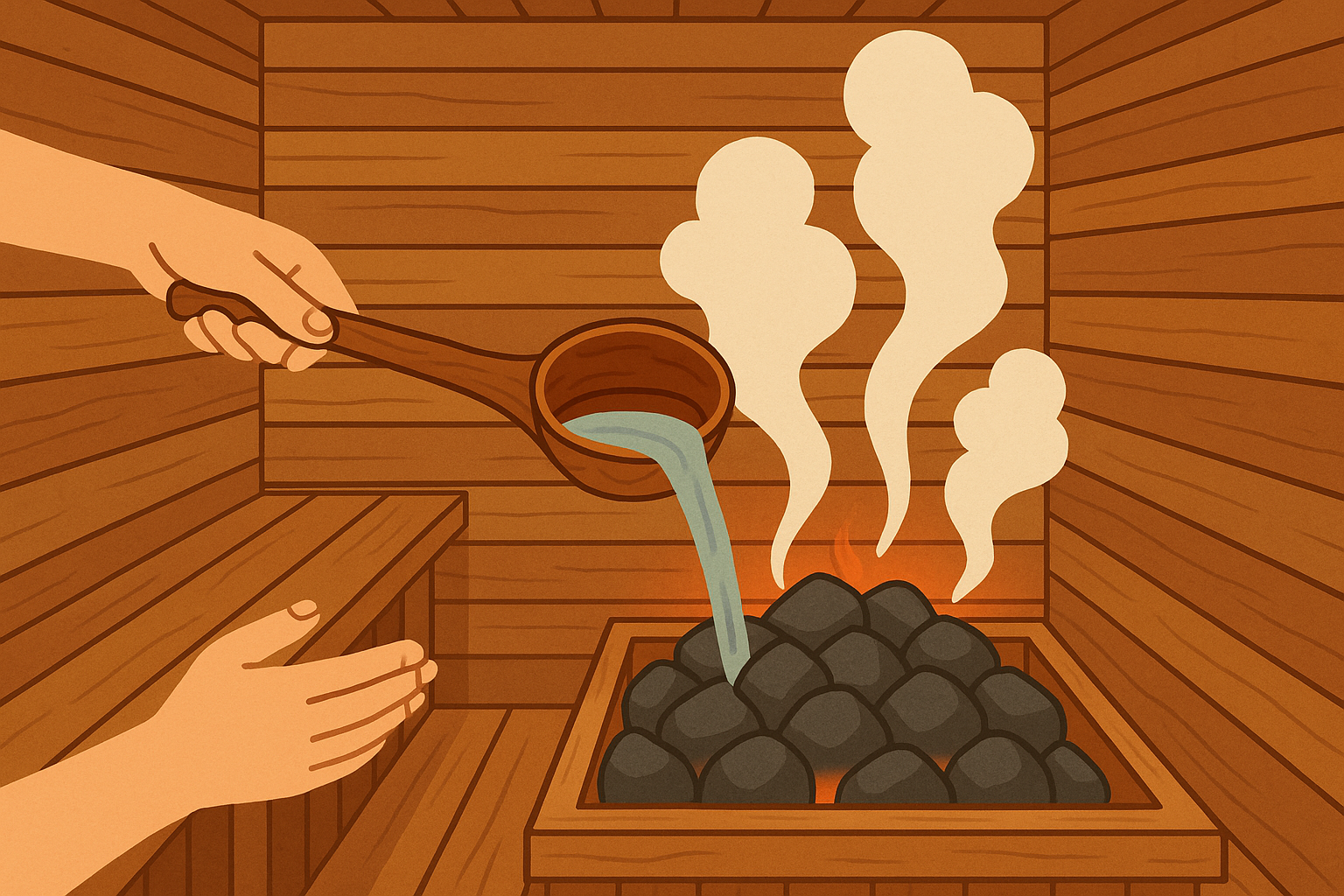
2. Vihta/Vasta (Birch Whisk Beating)
Fresh birch branches become your connection to Finland’s forests through this ancient practice. You harvest vihta in early summer when the leaves are tender and full of oils, then soak them in warm water before use. It’s like having a piece of the Finnish forest right there with you in the sauna.
The gentle, rhythmic motions of birch whisk beating improve circulation, exfoliate your skin, and create this incredibly aromatic experience that’s hard to describe. It often becomes social too – family members or friends applying vihta to each other’s backs and shoulders, creating these intimate moments of care.
This tradition peaks during summer months when birch leaves contain optimal oils and nutrients. You’re not just getting a skin treatment – you’re participating in a ritual that connects Finnish people to their forest environment and seasonal cycles.
3. Saunatupa (Sauna House) Traditions
The traditional saunatupa was way more than just a bathing space. You’re entering a building that historically hosted major life events – births, coming-of-age ceremonies, and spiritual cleansing rituals that define authentic finnish sauna traditions.
These complete sauna houses include the löylyhuone (steam room), dressing areas, and washing spaces. They were often the cleanest buildings on Finnish properties, maintained with the kind of reverence you’d give a church. The saunatupa’s thoughtful design influences modern sauna architecture – separate changing areas, proper ventilation systems, and spatial arrangements that support both quiet reflection and social gathering.
4. Sauna Silence (Hiljaisuus)
Peaceful quiet or hushed, respectful conversation creates the meditative atmosphere that’s essential to authentic finnish sauna experience. This silence promotes introspection and lets you focus on the physical sensations of heat, steam, and deep relaxation.
This isn’t awkward silence – it’s sacred space that respects everyone’s need for tranquility and mental breathing room. The quiet creates an almost church-like atmosphere where you can process thoughts, release stress, and connect with your inner self. Modern commercial saunas often struggle with this tradition, but understanding its importance helps you appreciate why authentic Finnish sauna culture values respectful quiet over social chatter.
5. Sauna Bathing Cycles (Kierros)
The traditional kierros pattern is like a rhythm that optimizes your finnish sauna experience through carefully timed cycles. You spend 10-15 minutes in sauna heat, followed by cooling periods through showers, swimming, or outdoor air, then rest for rehydration and socializing.
This cycle repeats 2-3 times, maximizing cardiovascular benefits while preventing you from overheating. The pattern creates natural conversation breaks and allows your body to fully process each heating and cooling phase.
Centuries of Finnish experience refined this timing. You’re following wisdom that balances maximum health benefits with safety and social rhythm, creating the optimal framework for authentic sauna culture that just works.
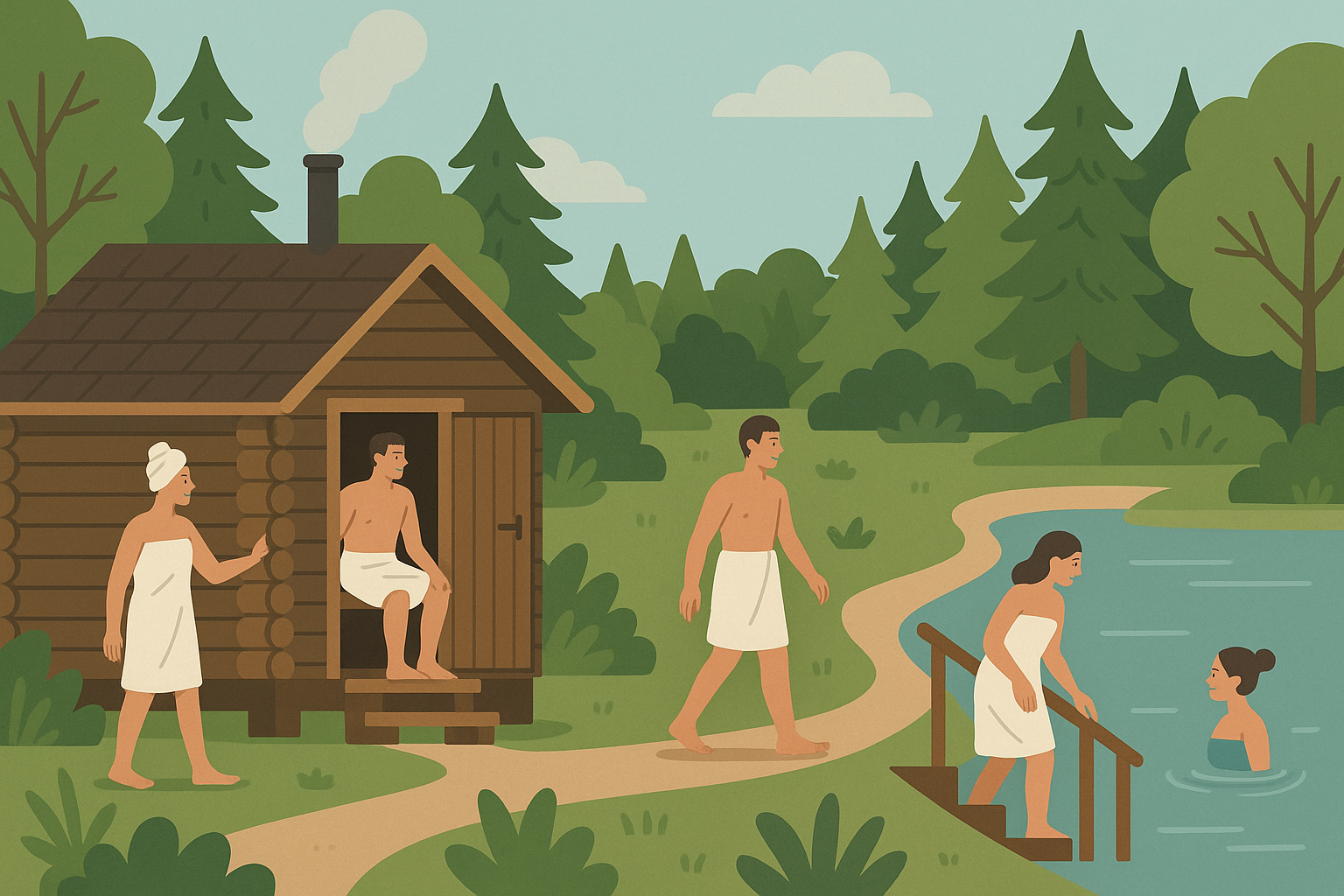
Why Architecture Actually Matters
Finnish sauna architecture represents centuries of trial and error focused on five essential elements: log construction for killer heat retention, wood-fired stoves for authentic heating, smoke saunas as the most traditional form, tiered bench systems for temperature control, and natural ventilation for safety and comfort. These aren’t just design choices – they directly impact how authentic and amazing your finnish sauna experience actually is.
6. Log Construction (Hirsisauna)
Look, there’s a reason Finns have been building saunas out of solid logs for hundreds of years – and it’s not just because they had a lot of trees lying around. Those thick pine or spruce logs are basically nature’s perfect insulation system. They expand when it gets hot, contract when it cools down, and somehow manage to seal themselves without any fancy modern materials.
I’ve been in plenty of modern saunas with all the bells and whistles, but nothing beats the feeling of a real log sauna. The wood actually breathes with you – no joke. It naturally manages moisture levels so you never get that stuffy, can’t-breathe feeling you sometimes get in newer constructions.
Sure, building with logs costs more upfront, but these things last forever. I’m talking generations here. Your great-grandkids could be sweating it out in the same sauna you build today.
7. Wood-Fired Stove (Puukiuas)
Okay, I’ll be straight with you – heating a sauna with wood is kind of a pain. You’ve got to start the fire 2-3 hours before you want to use it, tend to it like a needy pet, and actually know what you’re doing. But man, is it worth it.
The heat from a wood fire is completely different from electric. It’s gentler, more even, and when you throw water on those stones? *Chef’s kiss* The steam is silky smooth, not harsh like you get with electric heaters. Understanding the differences between wood-heated versus electrically-heated options helps you choose the right heating method for your authentic sauna experience.
Wood-Fired Sauna Heating Timeline
-
3 hours before use: Get the fire going with kindling and small birch logs
-
2 hours before: Add bigger logs, keep it steady
-
1 hour before: Final big logs, then let it burn down to coals
-
30 minutes before: Check temp (should hit 80-90°C)
-
15 minutes before: Stop feeding the fire, let coals settle
-
Ready to use: Perfect heat, minimal smoke, stones properly heated
Plus, if you’re using local wood, you’re basically carbon neutral. And there’s something deeply satisfying about managing a fire – it connects you to the whole experience in a way that flipping a switch just can’t match.
8. Smoke Sauna (Savusauna)
This is the holy grail of saunas, folks. UNESCO didn’t just randomly decide to protect smoke sauna culture – this stuff is special. But let me warn you: it’s not for the impatient.
We’re talking 6-8 hours to heat this baby up. No chimney during heating, so smoke fills the entire space, turning everything black over time. Sounds terrible, right? Wrong. The heat quality is absolutely incredible – soft, gentle, almost caressing.
I’ll never forget my first smoke sauna experience. Walking into this blackened room that looked like it survived a fire, then feeling the most amazing, enveloping heat I’ve ever experienced. It’s like the difference between harsh fluorescent light and candlelight – same basic function, completely different feeling.
Fair warning: this is a full-day commitment. You don’t just decide at 5 PM that you want a smoke sauna. But if you ever get the chance, do it. It’s pure magic.
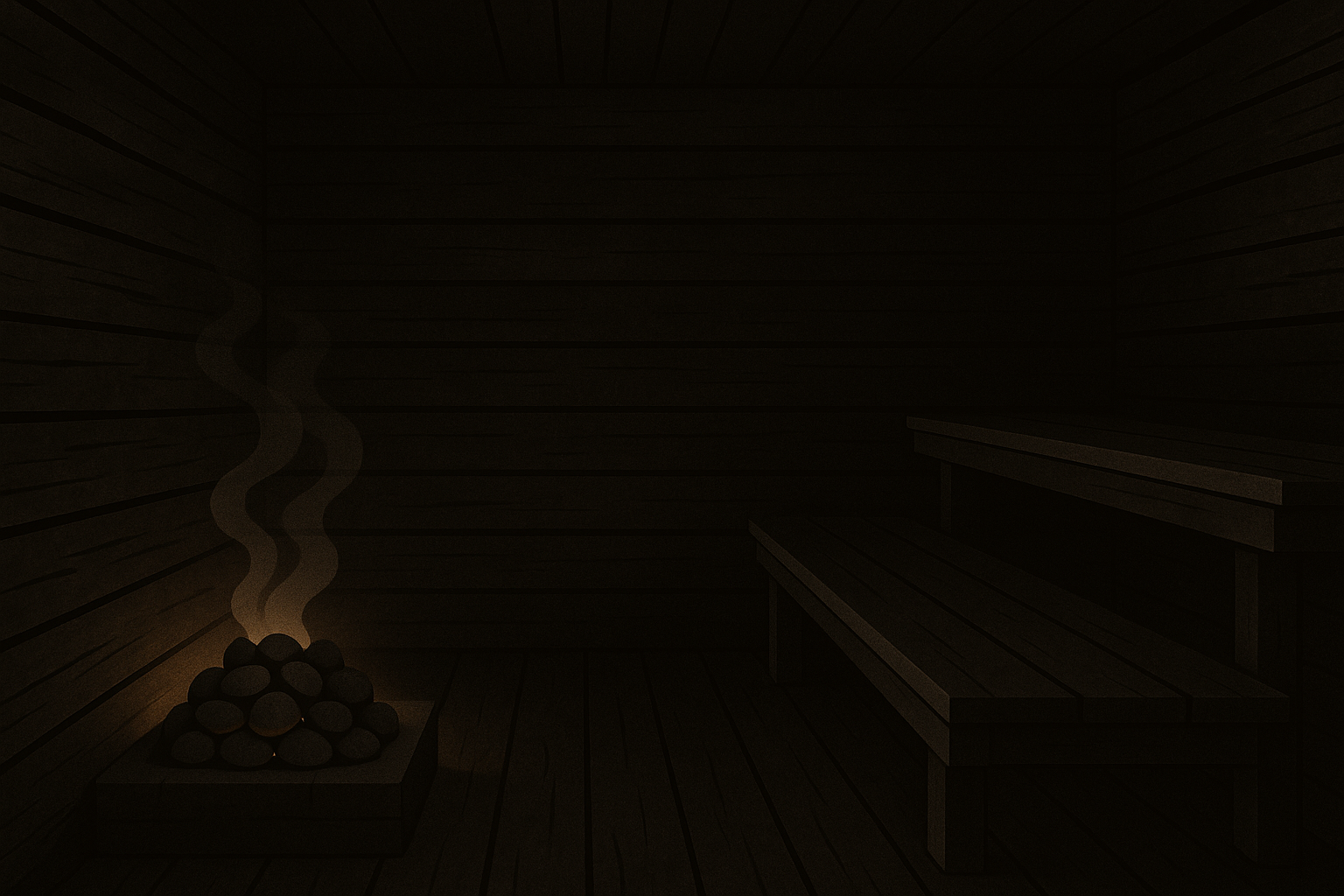
9. Tiered Bench System (Lauteet)
Here’s some practical physics for you: hot air rises. So the top bench in a sauna can be 20-30 degrees hotter than the bottom one. Genius, right?
These aren’t just random shelves thrown up on the wall. The benches are wide enough to lie down on (trust me, you’ll want to during longer sessions), and they’re made from woods like aspen that somehow stay cool to the touch even when the air around them is scorching.
There’s also a bit
There’s also a bit of sauna etiquette around the benches. Upper levels are usually for the experienced folks who can handle serious heat. Don’t be a hero on your first visit – start low and work your way up as you get comfortable.
10. Natural Ventilation (Tuuletus)
This might sound boring, but proper ventilation is what keeps you from passing out in there. Traditional saunas have intake vents near the floor and exhaust vents up high. Hot air goes up and out, fresh air comes in from below. Simple physics, but it works perfectly.
Without good ventilation, you’d basically be sitting in a hot, stuffy box gasping for air. Not exactly the relaxing experience you’re going for. The Finns figured this out centuries ago – fresh air circulation that doesn’t kill the heat.
|
Architectural Element |
Traditional Material |
Modern Alternative |
Key Benefit |
|---|---|---|---|
|
Wall Construction |
Pine/Spruce Logs |
Engineered Wood Panels |
Natural heat retention & moisture regulation |
|
Bench Material |
Aspen Wood |
Heat-treated Pine |
Cool touch surface even at high temperatures |
|
Stove Type |
Wood-fired (Puukiuas) |
Electric Heater |
Authentic löyly vs. convenience |
|
Ventilation System |
Natural Draft |
Mechanical Ventilation |
Optimal air circulation without heat loss |
|
Flooring |
Wooden Duckboards |
Tile with Drainage |
Traditional aesthetics vs. easy maintenance |
The Social Magic That Happens in Saunas
Finnish sauna culture’s social dimensions cover five key aspects that strengthen community bonds and preserve cultural values: family traditions that pass knowledge between generations, equality principles that eliminate social hierarchies, hospitality customs that welcome guests, business culture integration, and etiquette rules that ensure everyone has a good time.
11. Family Sauna Traditions (Perhesauna)
This is where sauna culture gets really beautiful. Finnish families don’t just use saunas together – they pass down traditions through generations like precious family recipes. Grandparents teaching kids how to make the perfect löyly, special family traditions around holidays, secret water mixtures that have been in the family for decades.
I’ve seen four generations in a sauna together, and it’s something special. Kids learning respect and cultural values not through lectures, but through shared experience. It’s education disguised as family time, creating some of the strongest bonds in Finnish families.
12. Sauna Equality (Tasa-arvo)
Here’s something beautiful about saunas: when everyone’s naked and sweating, it doesn’t matter if you’re the CEO or the janitor. No designer clothes, no status symbols, just people being human together.
This isn’t just feel-good philosophy – it’s a core Finnish value that the sauna naturally creates. I’ve seen business deals discussed between people who would never interact in normal circumstances, all because the sauna stripped away the usual social barriers. It’s like democracy in its purest form.
13. Sauna Hospitality (Vieraanvaraisuus)
In Finland, inviting someone to your family sauna is huge. Like, bigger than inviting them for dinner. You’re sharing your most sacred space, taking responsibility for their safety and comfort, and showing ultimate trust and friendship.
The host does everything – prepares the fire, controls the temperature, makes sure everyone’s comfortable. It’s a big responsibility, but it creates bonds that last lifetimes. This tradition creates mutual obligations and lasting relationships through shared vulnerability and authentic cultural experience.
14. Business Sauna Culture (Liikesauna)
Okay, this one’s tricky in today’s world, but traditionally, some of Finland’s biggest business deals were made in saunas. Something about shared vulnerability and informal atmosphere that cuts through all the corporate BS and builds real trust.
Obviously, this requires serious cultural sensitivity today, especially with mixed workplaces and international colleagues. But when done right, it builds trust in ways that conference rooms never could. The challenge is navigating traditions that must evolve while maintaining their core purpose of building authentic professional relationships.
15. Sauna Etiquette (Saunatavat)
The rules are simple but important: shower first (seriously, always), sit on a towel, ask before making löyly, respect the quiet, and keep your phone in the locker room.
These aren’t arbitrary rules – they ensure everyone has a good experience. Nothing kills the sauna vibe like someone taking selfies or having loud phone conversations. These rules rely on social pressure and cultural education rather than formal enforcement, creating respectful shared experiences.
How Seasons Shape Sauna Life
Finnish sauna culture integrates deeply with natural cycles through five seasonal practices: winter ice swimming for cardiovascular benefits, summer lake cooling for natural temperature regulation, midsummer celebrations during white nights, autumn harvest traditions marking seasonal transitions, and spring renewal activities that prepare saunas for the coming year.
16. Winter Ice Swimming (Avantouinti)
This is where Finns prove they’re absolutely crazy – in the best possible way. Picture this: you’re nice and toasty in a 90°C sauna, then you run outside and jump into water that’s literally freezing. Sounds insane? It kind of is. But it’s also incredible.
The shock is intense but brief – we’re talking 30 seconds to 2 minutes max. Then you run back to the sauna, and your body feels like it’s singing. The health benefits are real, but honestly, the mental boost of conquering that fear is even better.
Don’t try this without proper conditioning and supervision. I’ve seen tough guys turn into squealing children at their first ice plunge. This practice requires gradual conditioning and represents Finnish sisu – that cultural concept of resilience and determination.

17. Summer Lake Sauna (Järvisauna)
Summer cottage culture in Finland often revolves around lakeside saunas. Instead of shocking ice water, you get gentle cooling in clean, natural lakes. It’s like nature designed the perfect sauna cooling system.
The combination of sauna heat and lake swimming creates this perfect rhythm – heat up, cool down, repeat. Plus, you’re surrounded by Finland’s incredible natural beauty. It doesn’t get much better than direct access to clean lake water and swimming platforms that allow immediate cooling without the shock of ice-cold water.
18. Midsummer Sauna Celebrations (Juhannussauna)
During Finland’s white nights, when the sun barely sets, sauna celebrations can go all night. Fresh birch whisks at their peak, bonfires, traditional foods, and saunas running from evening till dawn.
It’s like Christmas morning, New Year’s Eve, and the best summer party you’ve ever been to, all rolled into one steamy, magical experience. Bonfires and outdoor celebrations combine with sauna traditions, creating community gatherings during the year’s most magical time.
Planning a Traditional Midsummer Sauna Celebration
-
Preparation: Gather fresh birch whisks at peak season (early June)
-
Community: Invite extended family and close friends for overnight celebration
-
Food & Drink: Prepare traditional Finnish foods like grilled fish, new potatoes, and berry desserts
-
Activities: Plan bonfire building, traditional games, and storytelling
-
Sauna Schedule: Multiple sessions from evening through dawn
-
Natural Elements: Incorporate wildflowers, lake swimming, and forest walks
-
Cultural Connection: Share stories and traditions with younger generations
19. Autumn Harvest Sauna (Syyskylpy)
After a summer of work, autumn saunas become deep cleaning rituals – for both body and soul. You’re washing off the season’s work while preparing for winter’s contemplative months.
There’s something perfect about this timing. Summer’s frantic energy gives way to autumn’s reflection, and the sauna facilitates that transition. Preservation of birch whisks and preparation of sauna supplies for winter use becomes part of the seasonal rhythm, connecting to Finland’s agricultural heritage.
20. Spring Renewal Sauna (Kevätsiivous)
Spring cleaning includes the sauna – and I mean serious cleaning. Deep scrubbing, repairs, restocking supplies, and preparing for another season of use.
The first outdoor cooling session after winter feels like rebirth. You’re literally and figuratively washing away winter and preparing for renewal. Community participation in spring sauna preparation strengthens neighborhood connections through shared work and seasonal celebration.
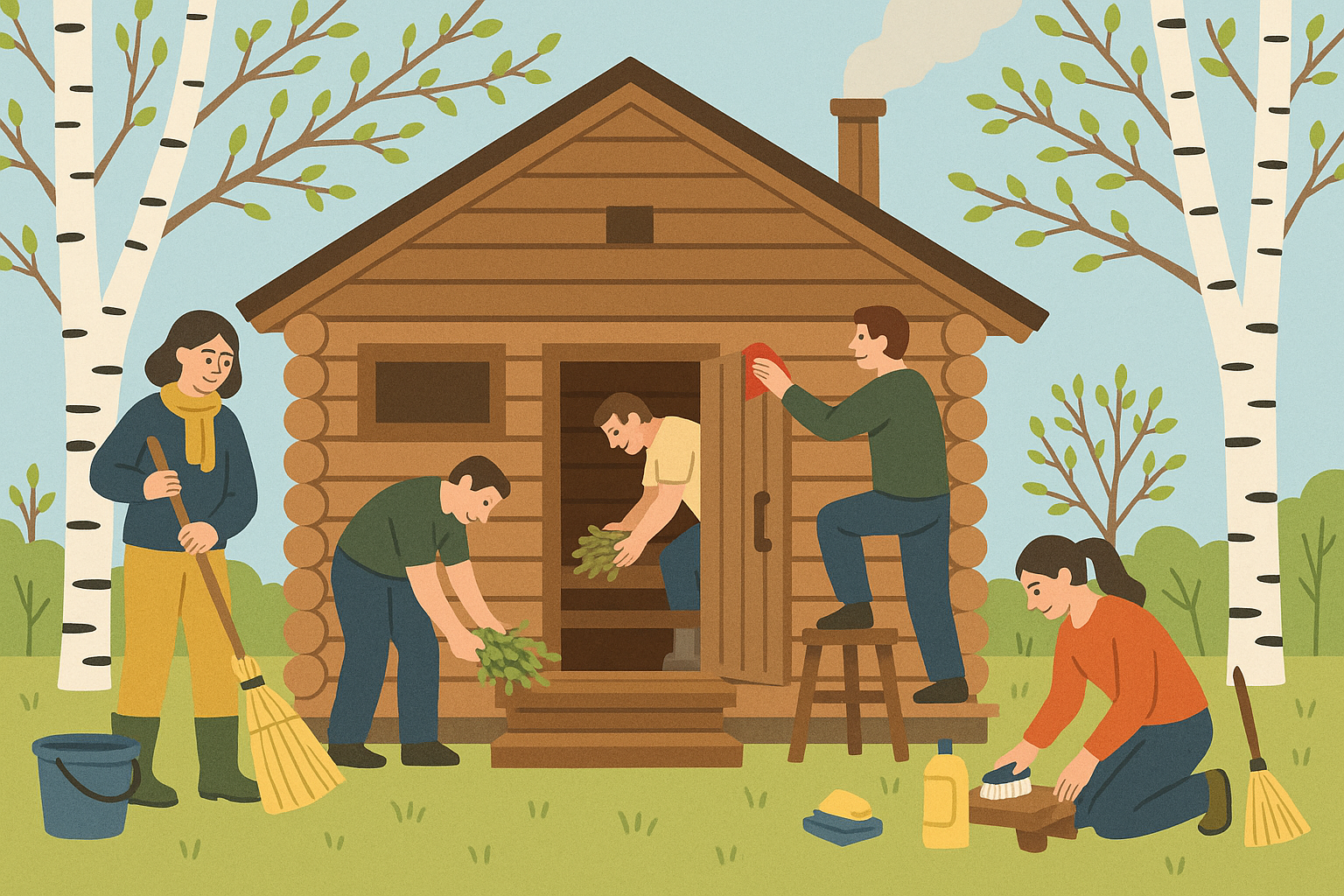
Modern Twists on Ancient Traditions
Contemporary Finnish sauna culture embraces five modern adaptations that balance tradition with accessibility: urban apartment installations, public sauna revival, wellness integration, sustainable technology, and digital features. These innovations expand sauna access while maintaining cultural authenticity and addressing environmental concerns.
21. Urban Apartment Saunas (Kerrostaloasauna)
City living doesn’t mean giving up sauna culture. Modern apartment saunas use compact designs and electric heating to bring authentic experiences to urban homes. Sure, you lose some traditional elements, but you gain daily access to sauna culture.
Sound insulation becomes crucial – nobody wants to hear their neighbor’s löyly sessions through thin walls. These installations prioritize convenience and daily access over some traditional elements, focusing on individual and family use rather than community experiences.
22. Public Sauna Renaissance (Julkisauna)
Cities are bringing back public saunas after decades of decline. These aren’t just facilities – they’re cultural centers with sauna masters who teach proper techniques and preserve traditions.
It’s like having a cultural ambassador who happens to run a really good sauna. These facilities serve multiple purposes – educating newcomers, providing community spaces for urban residents, and sharing authentic sauna culture with tourists while addressing the loss of traditional community sauna spaces.
23. Wellness Integration (Hyvinvointisauna)
Modern wellness trends are mixing with traditional sauna culture – guided meditation, yoga, aromatherapy. Some purists aren’t thrilled, but if it introduces new people to sauna culture while respecting core traditions, I’m okay with it.
The key is enhancement, not replacement. These approaches appeal to wellness-focused demographics and can enhance health outcomes, but they raise questions about cultural authenticity. The challenge lies in adding value without diluting traditional focus and spiritual elements.
24. Sustainable Sauna Technology (Kestäväsauna)
Environmental consciousness is driving innovation – solar heating, heat recovery systems, sustainable materials. Higher upfront costs, but it aligns with Finnish environmental values and ensures the culture can continue sustainably.
These technologies require higher initial investment but ensure cultural continuity while reducing environmental impact. Carbon footprint reduction becomes possible without compromising traditional sauna quality or cultural authenticity.
|
Modern Innovation |
Traditional Element Preserved |
Technology Integration |
Cultural Impact |
|---|---|---|---|
|
Smart Temperature Control |
Manual löyly creation |
App-based monitoring |
Maintains ritual while adding convenience |
|
Heat Recovery Systems |
Natural ventilation principles |
Energy-efficient air exchange |
Reduces environmental impact |
|
Urban Apartment Design |
Family sauna traditions |
Compact, sound-insulated units |
Brings culture to city dwellers |
|
Public Sauna Revival |
Community gathering spaces |
Professional management |
Preserves social aspects |
|
Wellness Programs |
Holistic health benefits |
Guided meditation, yoga |
Attracts new audiences |
25. Digital Integration (Digitaalinen sauna)
Smart controls, remote heating, temperature monitoring – technology that supports traditional practices without dominating them. The goal is convenience that enhances rather than replaces authentic experience.
Nobody wants their sauna experience interrupted by notifications, but being able to start heating remotely? That’s just practical. Safety alert systems and monitoring capabilities improve user safety while appealing to younger generations comfortable with digital integration, maintaining balance between technological convenience and cultural authenticity.
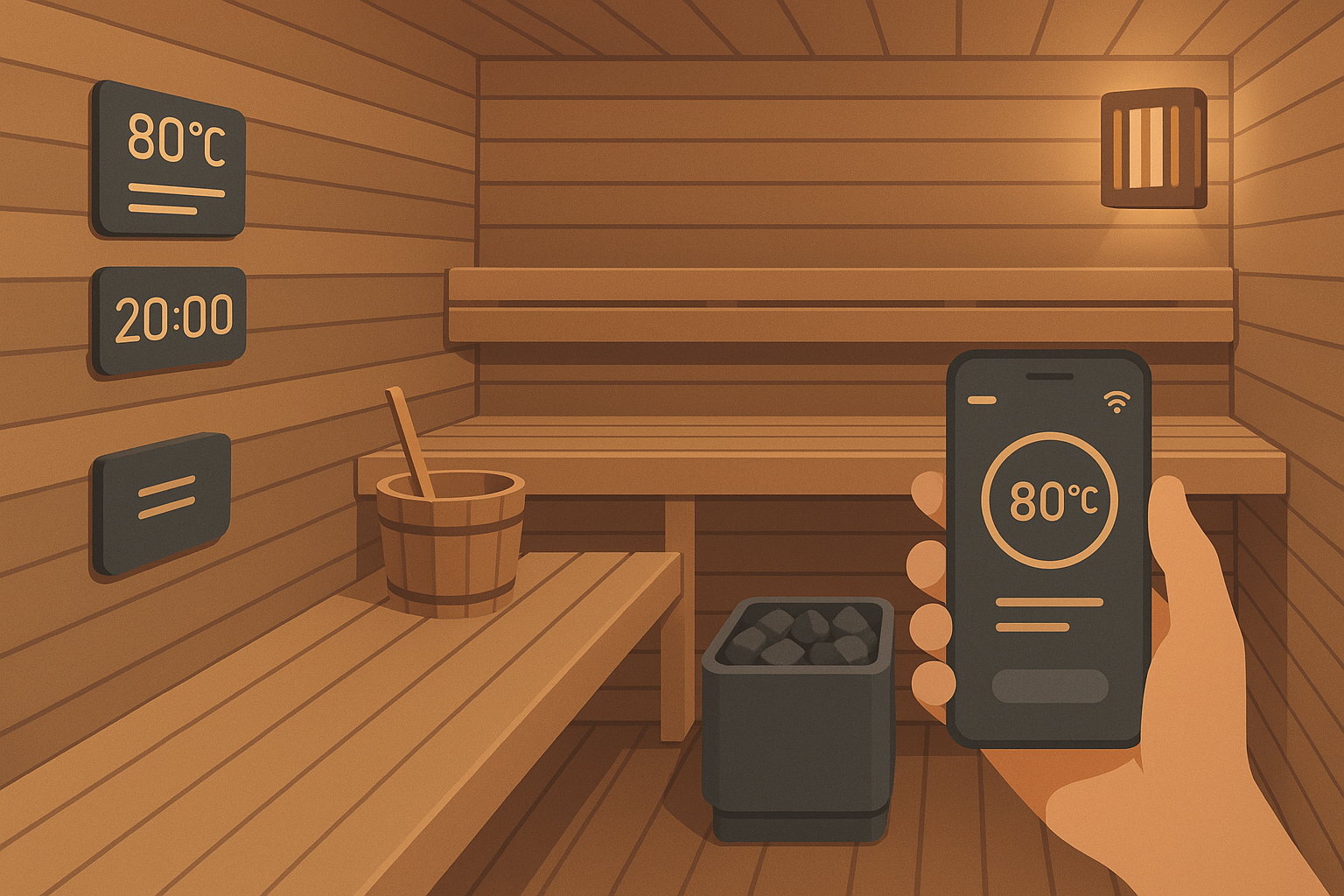
How HETKI Sauna Brings Authentic Culture Home
All these elements become accessible through HETKI Sauna’s commitment to authentic finnish sauna construction and cultural education. Their log construction approach provides the architectural foundation necessary for traditional practices like löyly rituals and family sauna traditions.
Understanding why a HETKI sauna belongs in your home reveals how these authentic finnish saunas can transform your understanding of genuine sauna culture in finland, bringing centuries-old traditions directly to your property.
HETKI’s yard-based installations enable the full cycle of seasonal integration – from winter ice swimming to summer cooling – that defines genuine sauna culture. Their customizable designs support everything from traditional purists seeking smoke sauna experiences to modern adapters wanting sustainable technology integration.
Most importantly, HETKI doesn’t just sell saunas – they provide cultural transmission. Their AI-powered Sauna Aatos and direct Finnish heritage connections ensure you get authentic knowledge alongside your installation, making the profound traditions of finnish saunas accessible regardless of your location.
Ready to bring authentic Finnish sauna culture to your home? Explore HETKI’s Hetki Collection and discover how their custom planning tools can create the perfect foundation for your own sauna traditions.
Final Thoughts
Finnish sauna culture is way more complex and beautiful than most people realize. These 25 elements work together to create not just a relaxation method, but a complete lifestyle that promotes health, community, and cultural connection while honoring centuries of cultural wisdom.
Whether you’re drawn to traditional wood-fired rituals or modern urban adaptations, the core values remain: equality, respect, seasonal connection, and holistic wellness. Understanding these elements transforms your relationship with saunas from simple heat therapy to authentic cultural participation that creates a little heat and a lot of happiness.
From ancient smoke saunas to modern digital integration, the core values of equality, respect, seasonal connection, and holistic wellness remain constant while evolving to meet contemporary needs. You’re not just getting hot and sweaty – you’re connecting with wisdom that’s shaped Finnish identity for centuries
From ancient smoke saunas to modern digital integration, the core values of equality, respect, seasonal connection, and holistic wellness remain constant while evolving to meet contemporary needs. You’re not just getting hot and sweaty – you’re connecting with wisdom that’s shaped Finnish identity for centuries and can genuinely enrich your own life through authentic cultural practice that honors the deep traditions of finnish sauna culture.

